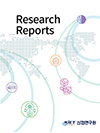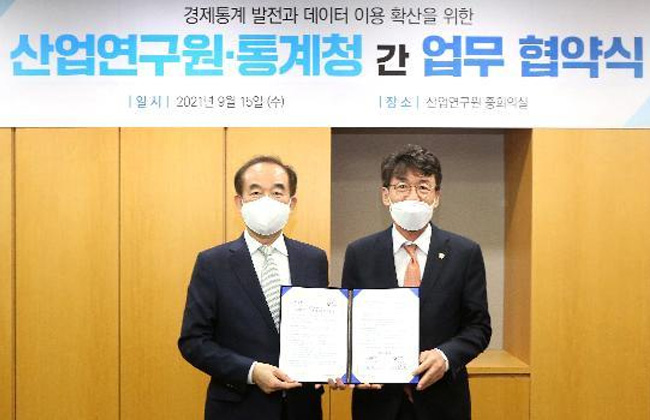Research Reports

In 2022, South Korea’s defense export orders reached a record high of $17.3 billion. However, it is probable that the global supply chain crisis, including intensifying competition for technological supremacy, prolonged trade disputes, and rising commodity prices, may act as a barrier to the current export boom. While the supply chain crisis is also visible in the defense industry, major advanced countries are already taking various measures to overcome supply chain risks in the defense industry, such as building a reliable supply chain. On the other hand,
the Korean defense industry lacks the concept of supply chain management and does not even conduct supply chain surveys, which is the first step in responding to supply chain risks. Therefore, in order to respond to the recent supply chain risks surrounding the defense industry, it is necessary to analyze the structure of the supply chain in domestic defense industry and develop a customized strategies to strengthen them.
The purpose of this study is to analyze the supply chain structure of major ground-based weapon systems in Korea, evaluate the stability and competitiveness of the supply chain, and draw policy implications for strengthening the supply chain in each sector.
The supply chain evaluation in this study was conducted from two main perspectives. First, the stability assessment of the supply chain focuses on the resilience of supply chain network and financial solidity of the firms belonging to those supply chains. We analyze the transaction relationship between manufacturers and suppliers and confirm the resiliency of the supply chain transaction structure. We further evaluate the financial stability of the supply chain by reviewing the financial indicators of the K9 self-propelled howitzer and K2 tank participants
to judge their growth, profitability, robustness, and productivity. Second, the supply chain competitiveness assessment was conducted by selecting the K9 self-propelled howitzers and K2 tanks and their foreign competitors, identifying the companies participating in their supply chains, and comparing the financial performance of foreign and domestic firms. Financial performance was analyzed based on key characteristics that determine the competitiveness of a product. Finally, the results of anaylsis on the supply chain stability and competitiveness
assessments were synthesized to derive policy measures to strengthen the supply chain in each sector

The works on this page are licensed for fair use under the provisions of the Korea Open Government License. See kogl.or.kr for more information.
Please enter the security text below
to prevent email collection
Please check the information of the person in charge.
연구과제 제안이 접수되었습니다.
신청이 접수되었습니다.


View Summary
코로나19 발생 이후 대부분의 고용 관심사가 항공 및 여행서비스, 음식·숙박 서비스 등 주로 서비스 업종에 집중된 상황에서 본 연구는 최근 그 중요성이 강조되고 있는 제조업의 고용변화를 살펴보았다. 분석에 따르면, 코로나19 이후 제조업 고용은 비교적 큰 충격 없이 빠르게 회복하는 모습을 보이고 있다. 제조업 고용은 서비스업에 비해 큰 충격 없이 유지되고 있고, 코로나19 직후 2020년 상반기에 약간 하락하였지만 하반기부터 회복 추세를 보이고 있으며, OECD 주요국의 제조업과 비교하여도 일본과 함께 고용 충격이 비교적 작게 나타나고 있다. 그러나 전반적으로 양호한 고용 성적에도 불구하고 제조업 내 특성 별로는 차이가 나타나는 것으로 보인다. 종사상 지위 별로 보면, 임시·일용직, 고용원이 있는 자영업자에서 고용 충격이 상대적으로 크게 나타났고, 상용직과 고용원이 없는 자영업자는 큰 충격이 없는 것으로 나타났다. 제조업 규모별로는 300인 이상의 경우 코로나 발생 초기 약간의 충격 이후 고용이 빠르게 반등하면서 코로나 이전보다 고용이 더 증가한 반면, 이보다 작은 규모의 제조업체들의 경우 고용 회복이 더디게 나타나고 있다. 고용의 중장기, 단기 추세선을 비교한 결과 제조업 업종에 따른 차이를 보였다. 코로나 발생 이전 3년간의 추세선을 2020년 1월부터 연장한 선과, 2020년 1월부터의 실제 자료를 이용한 단기 추세선을 비교한 결과, 의약품은 코로나19 발생 이전부터 시작하여 코로나19 발생 이후에도 견조한 증가세를 유지하고 있으며, 전자부품·컴퓨터, 기타운송장비, 가구는 코로나19 이후 오히려 고용 추세가 개선되었다. 그러나 다수 업종은 코로나 발생 이후 고용이 하락하였는데, 특히, 비금속광물, 1차금속, 금속가공 분야나 인쇄·기록매체 업종에서 하락이 상대적으로 크게 나타났다.
The following information is provided.
inform@kiet.re.krPlease complete the CAPTCHA below.
[전지적키에트시점] (Eng sub)심상치 않은
국내 대기업 움직임??
KIET 시점에서 보는 미래 로봇 산업 전망은
어떨까요?
경제전문가가 알려드립니다!
(산업연구원 박상수 실장)


